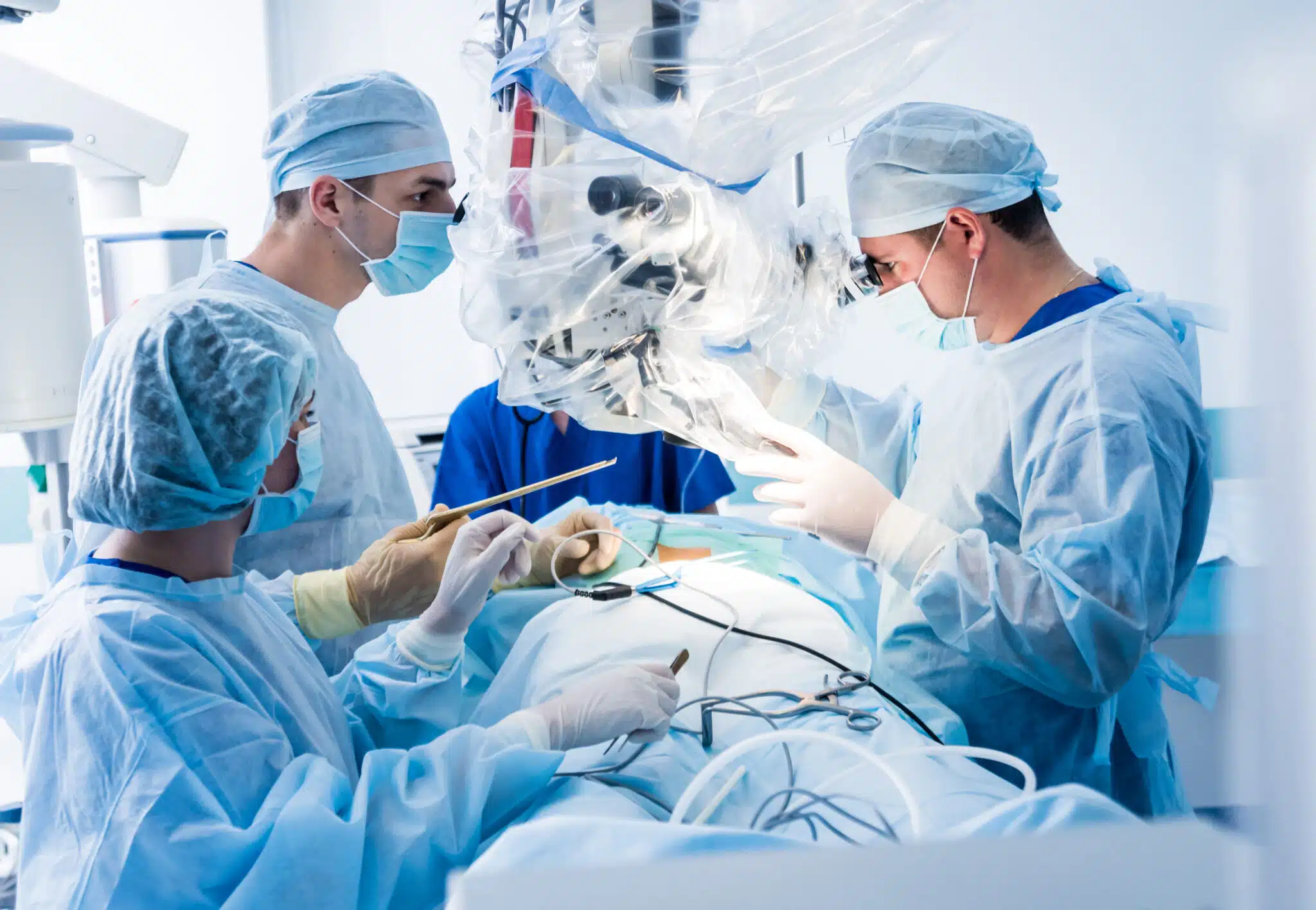What is Vertebral Column Resection (VCR)?
Vertebral Column Resection (VCR) is a specialized and intricate surgical procedure performed on the spine to correct severe deformities that cannot be effectively managed through less invasive treatments. This surgical technique involves the removal of a segment of the vertebral column, followed by realignment and stabilization of the spine using various instrumentation. VCR is reserved for complex cases where traditional spinal surgeries are insufficient to restore proper spinal alignment and function.
Which conditions are treated with VCR?
VCR surgery is typically considered for patients with severe spinal deformities or pathologies that significantly affect their quality of life, mobility, and spinal stability. Common conditions that may necessitate VCR include:
- Severe Scoliosis: When the spine has a pronounced lateral curvature that impairs lung function, causes pain, and interferes with normal activities.
- Hyperkyphosis: Excessive forward rounding of the upper spine that can lead to postural issues, pain, and neurological deficits.
What happens during surgery?
Vertebral Column Resection is a complex surgery that involves several steps:
- Anesthesia: The patient is placed under general anesthesia, ensuring they are completely unconscious and pain-free throughout the surgery.
- Surgical Approach: An incision is made over the affected area of the spine, exposing the vertebral column.
- Vertebral Resection: The surgeon meticulously removes a section of one or more vertebrae to release the deformity. This is a delicate step, requiring precision to avoid damage to surrounding nerves and structures.
- Realignment and Stabilization: Specialized instrumentation, such as rods, screws, and cages, are used to reposition and stabilize the spine in the corrected alignment. These implants provide support while the spine heals and fuses.
- Bone Grafting: To encourage fusion between adjacent vertebrae, bone grafts may be placed in the gaps created by the resected vertebral segment. The grafts promote natural bone growth and fusion.
- Closure: Once the spine is realigned and stabilized, the incision is closed using sutures or staples.
The duration of a Vertebral Column Resection (VCR) surgery can vary significantly based on various factors, including the complexity of the case, the number of vertebrae involved, the surgical team’s experience, and the patient’s overall health. On average, a VCR surgery can take anywhere from 4 to 10 hours or more. It’s important to note that this is a rough estimate and individual cases may fall outside this range.
What is the recovery time?
Recovery after Vertebral Column Resection (VCR) surgery varies based on factors like the patient’s health and the extent of the procedure.
Typically, patients spend around 5 to 10 days in the hospital post-surgery. Subsequent phases involve gradual progress: in the immediate weeks, patients work on mobility with assistance and begin physical therapy; the following weeks involve increasing exercise intensity, and after 3-6 months, patients often experience enhanced strength and flexibility.
Complete recovery can take up to a year or more as the spine fully fuses and the body adapts.
What are the risks of VCR?
Vertebral Column Resection (VCR) surgery is a complex and invasive procedure that carries certain risks, as do all major surgeries. It’s important for patients to be well-informed about these potential risks before making a decision about undergoing the procedure. Here are some of the risks associated with VCR surgery:
- Infection: Like any surgical procedure, there is a risk of infection at the surgical site or internally. Infections can be localized or more severe, affecting nearby structures or even leading to systemic infection.
- Bleeding: Surgery involves cutting through tissues, which can result in bleeding. While measures are taken to control bleeding during surgery, excessive bleeding can lead to complications that require additional interventions.
- Nerve Damage: The surgical manipulation of the spine and surrounding structures can potentially lead to nerve damage. This could result in numbness, weakness, pain, or other neurological deficits.
- Instrumentation Issues: The implants used to stabilize the spine, such as screws, rods, and cages, could cause complications. These implants might shift, break, or cause discomfort, requiring further surgeries for correction.
- Failure of Fusion: The process of bone grafting and fusion is essential for stabilizing the spine. However, fusion may not always occur as expected, resulting in pseudarthrosis (failure of bone to fuse properly), which might necessitate additional surgeries.
What are the benefits of VCR?
While the decision to undergo such surgery should be well-informed and made in consultation with a medical professional, here are some potential benefits of VCR:
- Improved Spinal Functionality: By realigning the spine, VCR surgery can improve overall spinal functionality. This can lead to enhanced mobility, range of motion, and the ability to perform daily activities with greater ease.
- Pain Relief: Many individuals with severe spinal deformities experience chronic pain due to nerve compression, muscle strain, and other issues. VCR surgery has the potential to alleviate or significantly reduce this pain, improving the patient’s overall comfort and quality of life.
- Enhanced Lung Function: Severe spinal deformities can compress the chest cavity and restrict lung expansion, leading to breathing difficulties. Correcting these deformities through VCR surgery can help improve lung capacity and breathing efficiency.
Conclusion
Vertebral Column Resection surgery is a complex procedure aimed at addressing severe spinal deformities and pathologies. It involves removing a portion of the vertebral column, realigning the spine, and stabilizing it using instrumentation. While the surgery comes with potential risks, the potential benefits in terms of improved quality of life can be significant. If you are a candidate for VCR surgery, discussing your concerns, expectations, and recovery plan with your surgical team is crucial to making an informed decision about your treatment journey.
